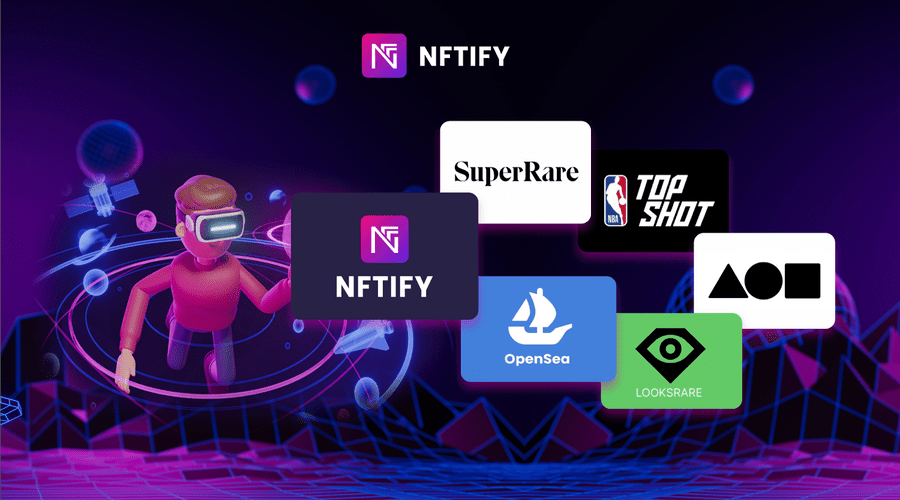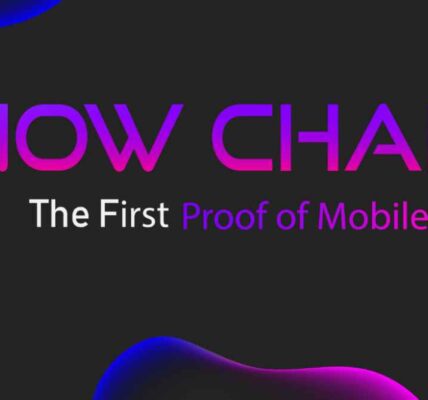The world of Non-Fungible Tokens (NFTs) has gained immense popularity, providing a unique way to tokenize and trade digital assets. NFTs have opened up exciting opportunities for artists, creators, and collectors, allowing them to showcase, sell, and own one-of-a-kind digital items. In this blog post, we will explore the diverse landscape of NFT marketplaces and platforms, understanding how they play a crucial role in the creation, minting, and trading of NFTs.
Understanding NFT Marketplaces and Platforms
NFT marketplaces and platforms are online marketplaces or platforms that facilitate the buying, selling, and showcasing of NFTs. They provide a space where artists and creators can mint and list their NFTs for sale, while collectors and enthusiasts can browse, discover, and purchase these unique digital assets. These platforms act as intermediaries, connecting artists with potential buyers and providing the necessary infrastructure for secure transactions.
Leading NFT Marketplaces and Platforms
Let’s explore some of the leading NFT marketplaces and platforms that have gained significant recognition in the NFT ecosystem:
1. OpenSea
OpenSea is a popular online marketplace that primarily focuses on the buying, selling, and trading of Non-Fungible Tokens (NFTs). It has gained significant recognition as one of the largest and most active platforms for NFT transactions. However, it is important to note that OpenSea is not involved in mining activities.
OpenSea is one of the largest and most popular NFT marketplaces. It offers a wide range of NFT categories, including digital art, virtual real estate, collectibles, and more. Artists and creators can easily mint and list their NFTs on OpenSea, while buyers can explore a vast collection of digital assets from various artists.
OpenSea, on the other hand, is not involved in the mining process. It functions as a marketplace where individuals can showcase and trade their existing NFTs. NFTs are unique digital assets that represent ownership or proof of authenticity for a particular item or piece of content, such as artwork, collectibles, virtual real estate, or virtual goods. These NFTs are typically created or minted on specific blockchain platforms, such as Ethereum, and then bought, sold, or traded on marketplaces like OpenSea.
OpenSea provides a user-friendly interface and infrastructure for individuals to discover, list, and transact NFTs with other users. It has gained popularity due to its wide variety of available NFTs and its ease of use. Users can browse through different categories, bid on auctions, or purchase NFTs using cryptocurrency.
2. Rarible
Rarible is a decentralized NFT marketplace that allows artists to create, sell, and collect royalties for their digital creations. It operates on the Ethereum blockchain and offers a user-friendly interface for artists to mint their NFTs. Rarible also enables the community to govern the platform and make important decisions through its native RARI governance token.
Rarible is a popular decentralized marketplace for buying, selling, and trading Non-Fungible Tokens (NFTs). However, it’s important to note that Rarible, like other NFT marketplaces such as OpenSea and SuperRare, is not involved in mining activities.
Mining is a process associated with blockchain networks that utilize Proof-of-Work (PoW) or Proof-of-Stake (PoS) consensus mechanisms. It involves validating and adding new transactions to the blockchain by solving complex mathematical problems. Miners contribute computational power and are rewarded with newly minted coins or transaction fees.

3. SuperRare
SuperRare is another well-known platform in the world of Non-Fungible Tokens (NFTs). Similar to OpenSea, SuperRare is primarily a marketplace for buying, selling, and trading NFTs. However, it is important to note that SuperRare, like OpenSea, is not involved in mining activities.
Mining is a process associated with blockchain networks that utilize Proof-of-Work (PoW) or Proof-of-Stake (PoS) consensus mechanisms. It involves validating and adding new transactions to the blockchain by solving complex mathematical problems. Miners contribute computational power and are rewarded with newly minted coins or transaction fees.
SuperRare, on the other hand, is not involved in mining operations. It provides a platform for artists and creators to showcase and sell their unique digital artworks as NFTs. These artworks are typically created on specific blockchain platforms, such as Ethereum, and then listed on SuperRare for collectors and enthusiasts to acquire.
SuperRare focuses on curating and showcasing high-quality digital art. It operates as an invite-only platform, featuring limited-edition digital artworks from a select group of artists. Each artwork on SuperRare is a unique, one-of-a-kind creation, making it highly sought after by collectors.
4. NBA Top Shot
NBA Top Shot has revolutionized the world of sports collectibles by offering officially licensed NBA NFTs. It allows fans to own and trade virtual basketball highlights, known as “moments,” in the form of NFTs. NBA Top Shot has gained massive popularity, attracting both sports enthusiasts and collectors.
5. Mintable
Mintable is a user-friendly NFT minting platform that enables creators to easily transform their digital creations into NFTs. It supports multiple blockchains, including Ethereum and Polygon, and offers various features for customization and royalties. Mintable aims to simplify the process of minting NFTs and empower creators to monetize their work.
Creators can upload their digital content, such as artwork, music, or virtual items, on Mintable and tokenize them as unique NFTs. Mintable focuses on simplifying the NFT minting process, making it accessible to a wider audience. The platform also provides features like customizable royalties, allowing creators to earn ongoing revenue from secondary sales of their NFTs.
Users can explore the Mintable marketplace to discover and acquire a diverse range of NFTs. Mintable aims to foster a community-driven ecosystem where creators, collectors, and enthusiasts can engage in the buying, selling, and trading of unique digital assets.
The Process of Creating and Minting NFTs
Creating and minting NFTs involves several steps, and NFT marketplaces and platforms play a vital role in this process. Here’s a simplified overview of the steps involved:
- Conceptualize and create the digital asset: Artists and creators conceptualize and create their digital assets, whether it’s a piece of artwork, a music track, a video clip, or any other unique digital item.
- Choose the appropriate NFT marketplace or platform: Artists select a suitable NFT marketplace or platform based on their specific needs, target audience, and desired features.
- Prepare metadata and attributes: Artists define the metadata and attributes of their NFTs, including title, description, image or file upload, and any additional information that adds value to the digital asset.
- Mint the NFT: Artists mint their NFTs by uploading the digital asset and associated metadata to the chosen marketplace or platform. This process creates a unique token on the blockchain that represents ownership of the digital asset.
- Set a price and list the NFT for sale: Artists determine a price for their NFTs, either through an auction format or a fixed price listing, and make them available for purchase on the marketplace or platform.
- Promote and market the NFT: Artists leverage social media, their network, and the marketplace’s promotional features to raise awareness and attract potential buyers to their NFTs.
- Transaction and ownership transfer: Once a buyer purchases an NFT, the transaction is recorded on the blockchain, and ownership of the NFT is transferred to the buyer’s wallet.
The Future of NFT Marketplaces and Platforms
As the NFT market continues to evolve and expand, we can expect to see advancements in NFT marketplaces and platforms. Innovations may include improved user interfaces, enhanced discoverability features, integration with augmented reality (AR) and virtual reality (VR) experiences, and support for additional blockchain networks. The growth of NFT marketplaces will likely continue to fuel the adoption of NFTs across various industries, from art and gaming to music and collectibles.
Conclusion
NFT marketplaces and platforms have revolutionized the way digital assets are created, sold, and owned. They provide a dynamic ecosystem where artists can showcase their creativity, collectors can discover unique digital items, and enthusiasts can participate in the growing NFT market. With the continuous evolution of technology and the increasing interest in NFTs, these platforms will play a crucial role in shaping the future of digital ownership and the NFT landscape.
FAQs
- Can anyone create and sell NFTs on these marketplaces and platforms? Yes, most NFT marketplaces and platforms allow anyone to create and sell NFTs, provided they meet the platform’s guidelines and requirements. Some platforms may have a curation process or specific criteria for certain categories.
- Are there any fees involved in minting and selling NFTs? Yes, there are typically fees involved in minting and selling NFTs on marketplaces and platforms. These fees may include gas fees (transaction fees on the blockchain), platform fees, and royalties for the platform or the original creator.
- Are NFT marketplaces and platforms secure? NFT marketplaces and platforms prioritize security and employ various measures to protect users’ digital assets and transactions. However, it’s essential for users to exercise caution, conduct research, and follow best practices when participating in the NFT ecosystem.
- Can NFTs be transferred between different marketplaces and platforms? NFTs are typically tied to the blockchain on which they were minted. However, some marketplaces and platforms are working on interoperability solutions to allow the transfer of NFTs across different networks and platforms.
- What types of digital assets can be minted as NFTs? Virtually any unique digital asset can be minted as an NFT. This includes digital artworks, music tracks, videos, virtual real estate, in-game items, domain names, and more. The versatility of NFTs opens up endless possibilities for creators and collectors alike.





